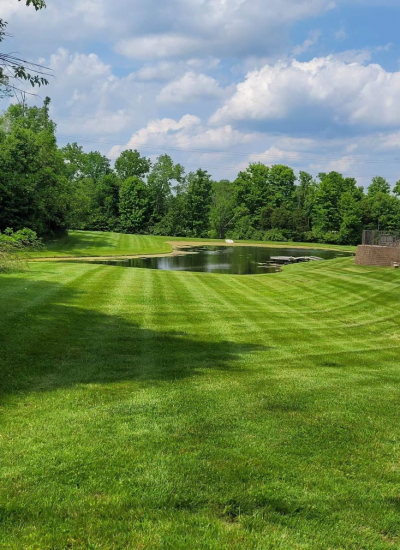As businesses increasingly prioritize sustainability, integrating eco-friendly practices into commercial landscaping has become essential. Sustainable commercial landscaping not only benefits the environment but also enhances the aesthetic and functional value of commercial properties. This blog explores the principles of sustainable landscape design, eco-friendly commercial landscaping strategies, and the benefits of green landscaping practices for commercial property maintenance.
Principles of Sustainable Landscape Design
Sustainable landscape design focuses on creating environmentally responsible and resource-efficient landscapes. This approach aims to reduce the environmental impact of landscaping while enhancing the natural beauty and functionality of the space.
Efficient Water Use: One of the core principles of sustainable landscape design is efficient water use. This includes incorporating drought-tolerant plants, using mulch to retain soil moisture, and installing efficient irrigation systems. Drip irrigation and smart controllers ensure that water is delivered directly to the plants’ roots, minimizing waste.
Soil Health: Healthy soil is the foundation of a sustainable landscape. Practices such as composting, mulching, and avoiding chemical fertilizers improve soil structure, fertility, and water retention. Healthy soil supports robust plant growth and reduces the need for additional inputs.
Native Plants: Using native plants in landscape design promotes biodiversity and reduces maintenance requirements. Native plants are adapted to the local climate and soil conditions, making them more resilient and less resource-intensive. They also provide habitat and food for local wildlife, enhancing the ecological value of the landscape.
Eco-Friendly Commercial Landscaping Strategies
Implementing eco-friendly landscaping strategies helps create sustainable commercial properties that are both attractive and environmentally responsible.
Permeable Paving: Permeable paving materials, such as porous concrete or pavers, allow water to infiltrate the ground, reducing runoff and recharging groundwater. This practice helps manage stormwater, reduces the risk of flooding, and minimizes the strain on municipal drainage systems.
Green Roofs and Walls: Green roofs and living walls are innovative solutions for urban commercial properties. These features provide insulation, reduce energy consumption, and improve air quality. They also offer aesthetic benefits and create additional green spaces in otherwise limited areas.
Rain Gardens: Rain gardens are designed to capture and filter rainwater runoff. Planted with water-tolerant species, these gardens help reduce erosion, improve water quality, and provide habitat for wildlife. Rain gardens are an attractive and functional addition to sustainable commercial landscapes.
Benefits of Green Commercial Landscaping
Green commercial landscaping practices offer numerous benefits that extend beyond environmental sustainability. These practices can enhance property value, improve employee well-being, and strengthen a business’s reputation.
Enhanced Property Value: Sustainable landscapes can increase the value of commercial properties. Eco-friendly features such as green roofs, native plantings, and efficient water management systems are attractive to potential buyers and tenants. These features can command higher rental and sale prices, making them a worthwhile investment.
Improved Employee Well-Being: Access to green spaces has been shown to improve mental health and productivity. Landscaped areas provide employees with places to relax, socialize, and enjoy nature, contributing to a positive work environment. Sustainable landscapes also reduce urban heat island effects, creating more comfortable outdoor spaces.
Positive Brand Image: Businesses that prioritize sustainability in their landscaping practices can enhance their brand image. Customers and clients increasingly value environmental responsibility, and sustainable landscapes can demonstrate a company’s commitment to eco-friendly practices. This positive perception can strengthen customer loyalty and attract environmentally conscious clientele.
Practical Tips for Sustainable Commercial Property Maintenance
Maintaining a sustainable landscape requires ongoing attention and smart practices to ensure its long-term success and environmental benefits.
Regular Monitoring: Regular monitoring of the landscape is essential to identify and address issues promptly. This includes checking irrigation systems for leaks, monitoring plant health, and adjusting maintenance practices as needed to ensure the landscape remains resilient and thriving.
Integrated Pest Management (IPM): IPM is a sustainable approach to pest control that minimizes the use of chemicals. It involves monitoring pest populations, using biological controls such as beneficial insects, and implementing cultural practices like crop rotation and proper plant spacing to prevent pest problems.
Sustainable Fertilization: Using organic fertilizers and soil amendments can improve soil health and reduce the environmental impact of fertilization. Compost, manure, and other organic materials provide essential nutrients to plants without the negative effects of synthetic fertilizers.
Energy-Efficient Maintenance: Using energy-efficient equipment for landscape maintenance, such as electric or battery-powered mowers and trimmers, reduces greenhouse gas emissions and noise pollution. These tools are not only environmentally friendly but also contribute to a quieter and more pleasant outdoor environment.
FAQ
What are the principles of sustainable landscape design? The principles of sustainable landscape design include efficient water use, maintaining soil health, and using native plants to create environmentally responsible and resource-efficient landscapes.
How can businesses implement eco-friendly landscaping strategies? Businesses can implement eco-friendly landscaping strategies by using permeable paving, installing green roofs and walls, and creating rain gardens to manage stormwater and enhance biodiversity.
What benefits does green commercial landscaping offer? Green commercial landscaping enhances property value, improves employee well-being, and strengthens a business’s reputation by demonstrating a commitment to environmental sustainability.
What is Integrated Pest Management (IPM)? Integrated Pest Management (IPM) is a sustainable approach to pest control that minimizes chemical use by employing biological controls, cultural practices, and regular monitoring to manage pest populations.
How can sustainable fertilization practices benefit commercial landscapes? Sustainable fertilization practices, such as using organic fertilizers and soil amendments, improve soil health, provide essential nutrients to plants, and reduce the environmental impact of fertilization.

